
Treadmills
Going to the gym feels like a virtuous and healthy act: You’re taking care of your muscles and lungs, burning calories, and protecting your heart—as long as you’re careful. You might be shocked to discover gym-related injuries increased by a third in recent years, according to research from the University of Arkansas. The dangers hit the headlines when Survey Monkey CEO Dave Goldberg fell off a treadmill and ended up with a fatal head injury.
Treadmills are the most dangerous gym machine—they account for 35 percent of workout-related emergency room visits. Stay safe: If you’re not a seasoned runner, begin slow and only add speed when you’re comfortable and confident. “Picking an unrealistic speed can result in injury because you don’t have the strength or efficiency in your cadence to maintain those speeds,” says Emily Hutchins, owner of On Your Mark, Nike Master Trainer and coach on the Sweatworking. Stay safe by listening to your stride, explains sports coach Olivier Vancassel, a specialist in biomechanics, ultra-endurance running, and the manager at Six Senses Spas at Nobu Hotel Ibiza Bay. If you’re really pounding the belt, you’re putting too much pressure on your legs, he warns.
Here are more common treadmill workout mistakes.
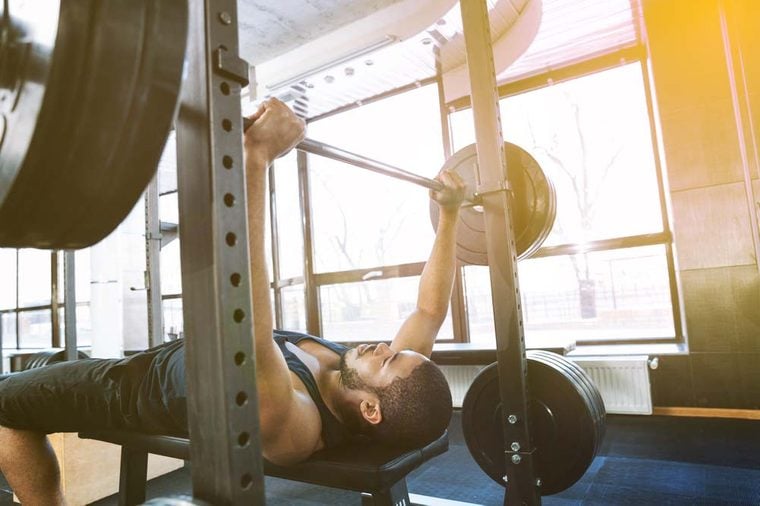
Bench press
Andrea Fornarola Hunsberger, the founder of Elements Fitness, believes that pumping big weights on the bench is only appropriate if you have plenty of experience lifting. She strongly recommends learning proper form, lifting an amount you’re comfortable with, and working with a partner. People most often injure their wrist (sprains or fractures) and shoulders (rotator cuff tears). Your chest—the sternum and ribcage—and neck are also vulnerable. Learn more about what can cause exercise-related chest pain (besides a heart attack).
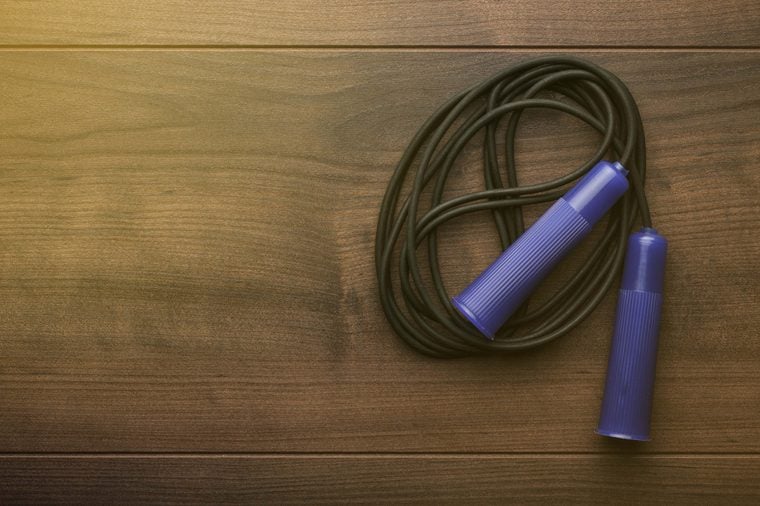
Jump rope
They’re cheap, portable, and you can use them to raise your heart rate and work up a sweat very quickly. In fact, they’re one of the workouts that burn more calories than running. But this device from your childhood can pack a wallop if you’re not careful: “Accidents often happen because a rope is too long,” says Hunsberger. Get some instruction on sizing the rope, she says, and take note of those around you. “Jump rope injuries include lacerations or whips to the skin from the rope or, even worse, black eyes and broken noses from the plastic handles.”
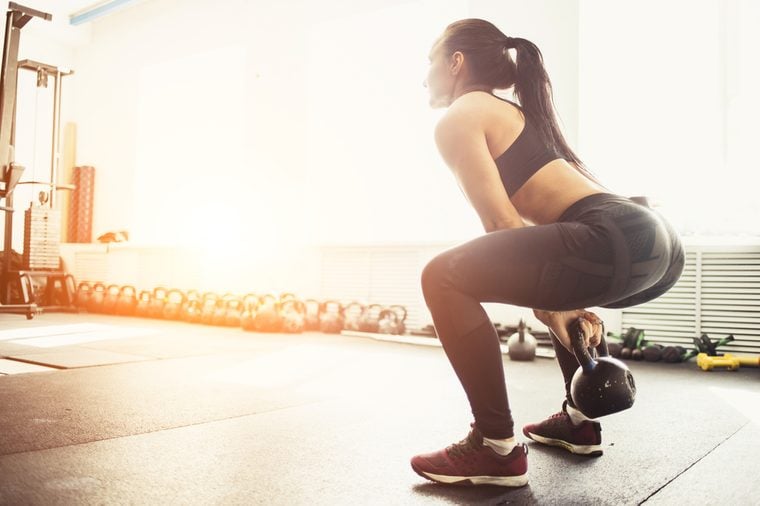
Kettlebells
Swinging a kettlebell might look like a nice change of pace—but once you get that weight moving it can be hard to stop it. Hutchins stresses that kettlebells are meant to be taught by trained professionals, so sign up for a class. Also: “If your instructor doesn’t have a specific certification for this, you probably should reconsider—popular kettlebell drills are associated with speed and force and if not taught in proper progressions, these drills will lead to injury,” she says.

Heavy bags
“Boxing on a heavy bag can be one of the best forms of cardio, conditioning, and resistance training,” says Courtney Belcastro, a trainer at Title Boxing Club and SHRED415, and coach on the SweatWorking. “However, hitting the bag with poor form can put you at risk for many types of injuries.” She winces when she sees a gym-goer walk up to the bag and start punching it as hard as they can. “This is dangerous and can put you at risk to injure your hands, shoulders, upper back, neck, and even pull muscles in your core. Hands need to be properly wrapped with tape or boxing wraps, and make sure you are wearing at least 12-oz to 14-oz gloves to ensure that they have enough padding for you as you hit the bag.”
Check out this workout that will help develop your boxing technique.
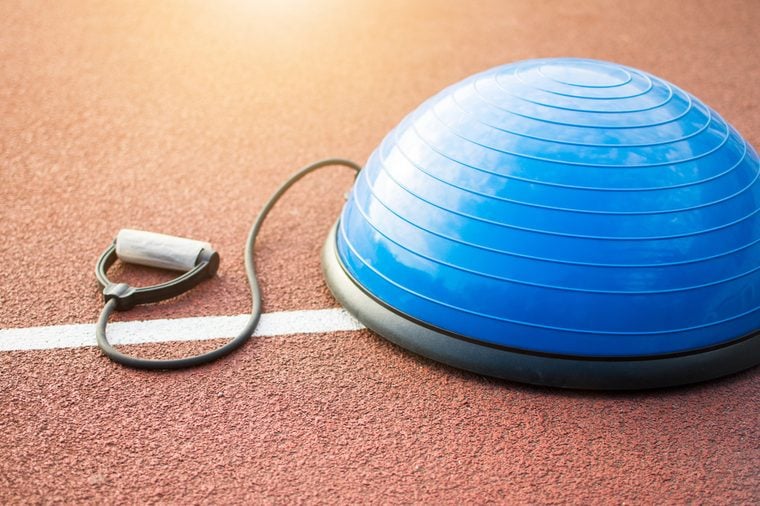
Bosu Ball
It may look innocuous, but the Bosu hides some nasty surprises. While the half-ball can help build core strength and stability, it isn’t the best method for healthy people, according to Rob Sulaver, founding trainer at Rumble Boxing and founder of Bandana Training. “Doing squats on a Bosu ball can be helpful if you’re recovering from an injury,” he says. Otherwise, the challenge of trying to balance can prevent you from benefiting from the exercise, he says.
Some fitness instructors think the Bosu is a waste of time—along with these other fitness moves.
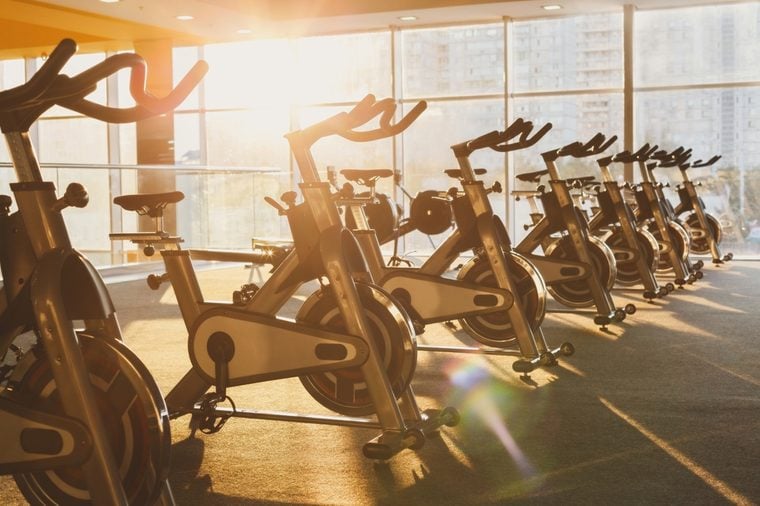
Indoor bikes
A poor bike fit can result in improper pedaling technique, warns Hutchins. That can harm your knees, hips, shoulders, and even elbows, warns Hutchins. Always ask a trainer to help you adjust the saddle height and distance between saddle and handlebars if you’re unsure.
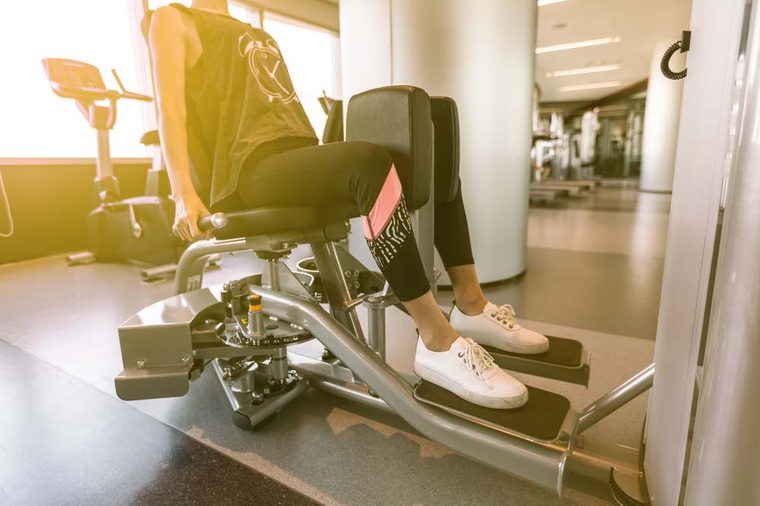
Adductor machine
This is the machine that works the inner thighs and groin (adductor muscles) if you put the pads inside your knees. (It builds your outer thighs and glutes—abductors—if the pads are outside your knees.) Some of these muscles are more delicate than others: “There are certain areas I strongly recommend not working in isolation, like adductors,” says Vancassel. “Don’t torture them on a machine! A lack of control in the movement combined with a heavy load can have a ‘spring’ effect, which can cause injury and a shortening of muscle fibers.” Instead, he suggests, doing sumo squats, lunges, and other exercises with or without additional weight to build strength in the adductor region while mitigating your injury risk.
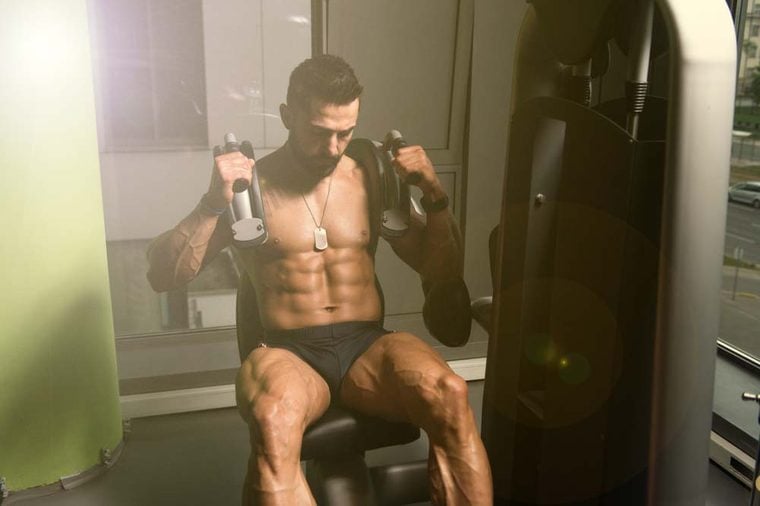
Ab crunch machine
Overuse is the issue with this exercise, says Kamraan Husain, DO, a certified chiropractor who specializes in the biomechanics of athletes for both pain management and performance. “Repeatedly contracting the abdominals can fatigue our spinal muscles and cause injury,” says Dr. Husain. Try these workouts for killer abs instead.
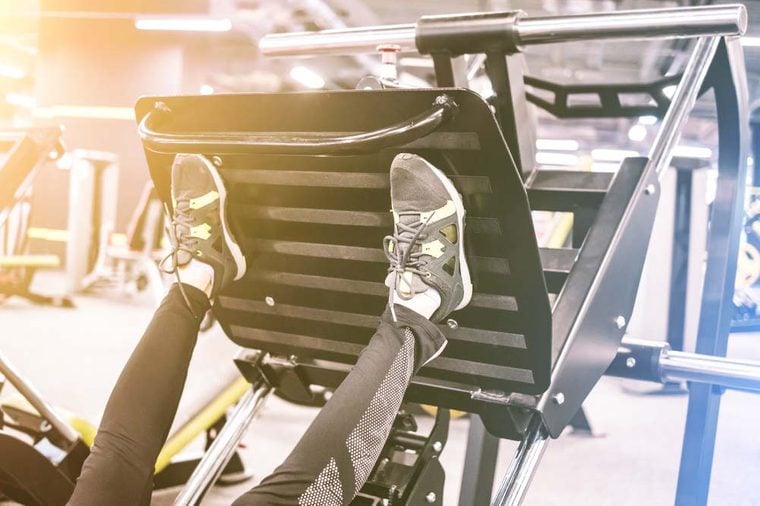
Seated leg press
While this machine is a fantastic way to build stability and power in your legs, there are two common mistakes people make: They hyperextend—lock—their knees, and they use too much weight. “With a leg press, the lower back is at risk when you overload the weight,” says Rumble Boxing trainer Kory Flores. “Locking the knees is another common mistake that puts stress on joints instead of muscles. Make sure your knees stay in line with your toes, push your weight through your heels, and use a semi-challenging weight.” And remember, you can always work your legs without using gym equipment!
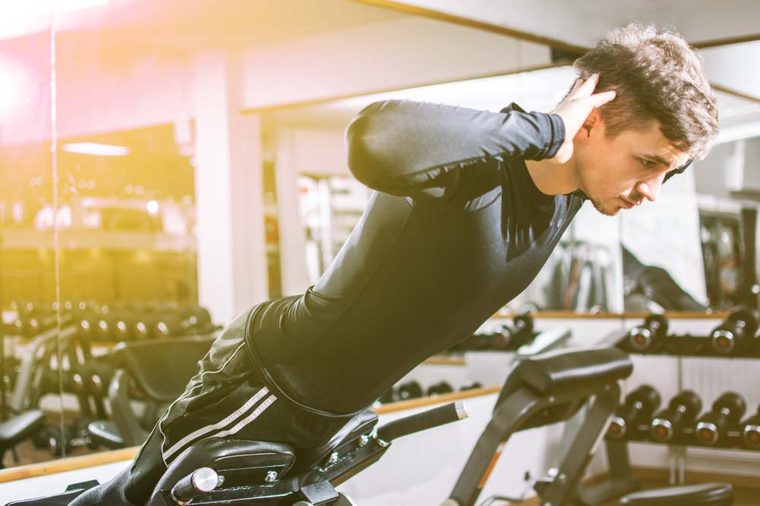
Back extension machine
Locking in your legs, hinging at the waist, and letting gravity take over as you lower your upper body can be a recipe for disaster. “The back extension machine is a great exercise to restore extension within our spinal column,” says Dr. Husain, “however it is often butchered due to the lack of control and coordination.” To stay safe, he recommends ‘squeezing’ your glutes and pushing your shoulder blades “back and down” as you lower forward.
And be sure to watch for signs that your upper back is in serious trouble.
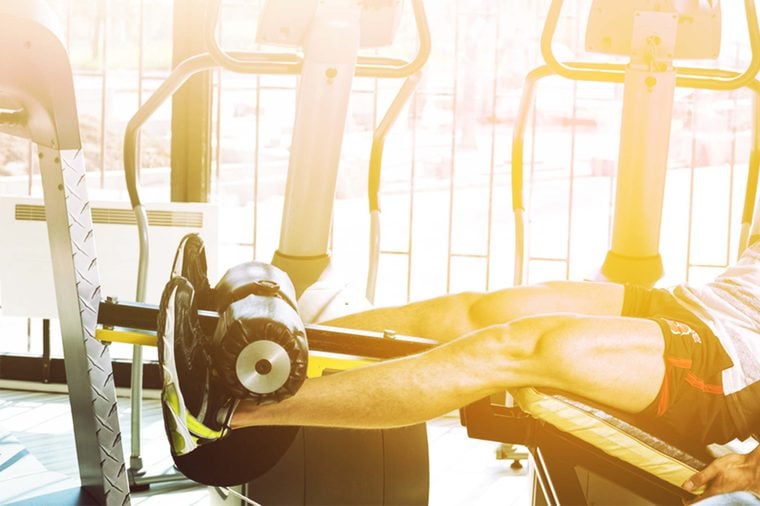
Knee extension machine
Sure, you can get nice looking quads with this “leg curl,” but there’s no real-world benefit, Dr. Husain says. Worse, the weight-plus-repetition of the move puts stress on the anterior cruciate ligament (ACL) and cartilage in the knee, he warns. If you like using the machine, make sure you sit back against the seat pad and extend your legs in a controlled manner—don’t swing the weights to use momentum for the lift: You’ll strain your knee.
If you have pain in that joint already, check out these quick knee pain fighters.
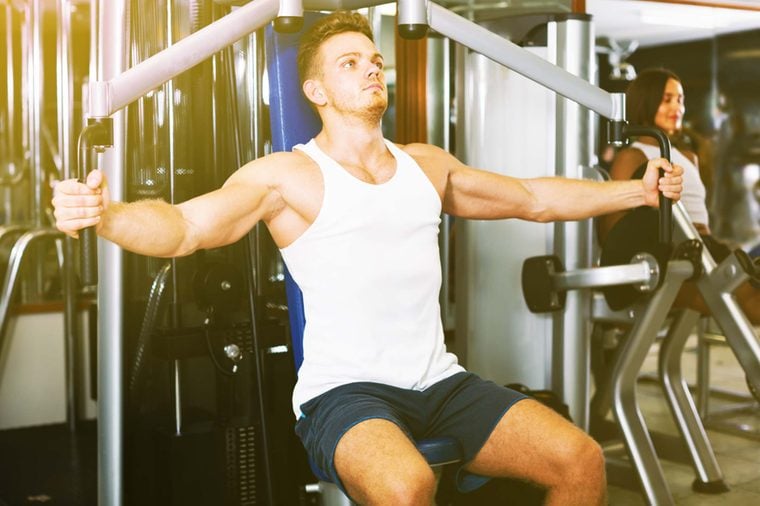
Pec fly machine
This machine is particularly popular with men as it helps define the chest muscles. “Done properly it’s an extremely effective apparatus, but many users don’t adjust the machine properly to line up the handles with their chest muscles,” says Doug McQuery, who runs digital product and business development at Physique 57. “Additionally, when combined with too much resistance, it’s easy to overwork the shoulders and there’s potential for strains or impingements.”
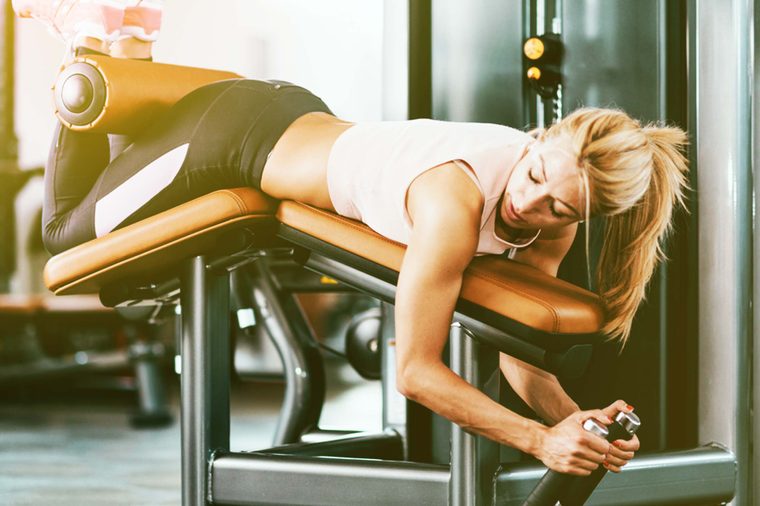
Prone hamstring curl
The problem that McQuery often sees is that people put too much weight and pull the machine by arching their backs and tilting their hips. “This can cause both back and hamstring injuries.” He stresses that it’s very important to maintain alignment to maximize the benefits of the movements and also to improve overall posture. Here are more ways to ease back pain and improve posture.
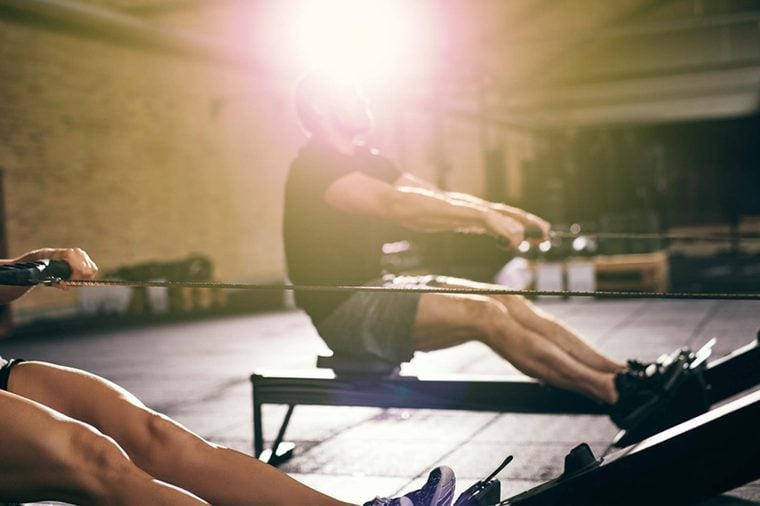
Rowing machine
Rowing machine-based classes are a growing trend since they combine cardio with strength training. Unfortunately, if you don’t use the machine properly, your lower back will pay the price. “Proper form on the rowing machine requires one to use his/her legs, core, and arms—in exactly that sequence,” says celebrity trainer and fitness specialist Mohamed Elzomor. “Make sure you’re using your legs to push you through the movement, and not your lower back.”
Check out the 15 workouts that burn the most calories, according to science.
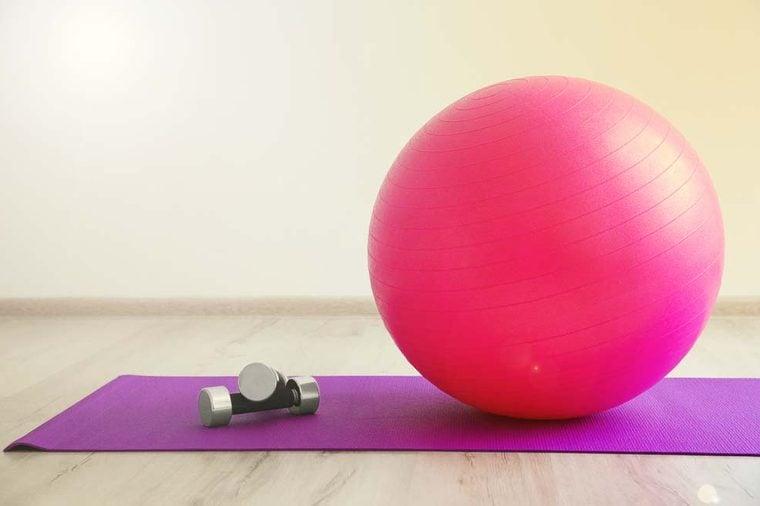
Physioball squats
Instagram might make it tempting to try squatting on one of these, but don’t: “When it comes to stupid training, this is like a Bosu squat x 1000,” says Sulaver. “It’s a cool party trick, but it does nothing to make you a better athlete.” Sulaver has a better plan: “You know what will make you a better athlete? If you plant both feet on the ground and do some heavy squats. That’s a great idea.”
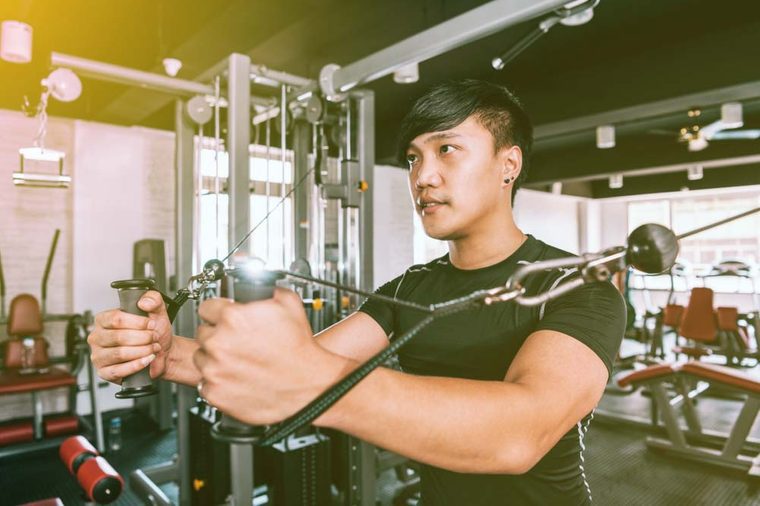
Standing cable tower
This piece of equipment offers a variety of exercises and resistance options—but this can be risky, as well. “There are several knobs and levers that adjust the placement of the handles,” says Rumble Boxing trainer Christina Jensen. “If you’re not careful, you can pinch your fingers or hands; plus the lever can fall on your hand or head. This has happened to me several times, leaving me with blood blisters and contusions.” Be very conscious of all your movements when operating a standing cable tower.
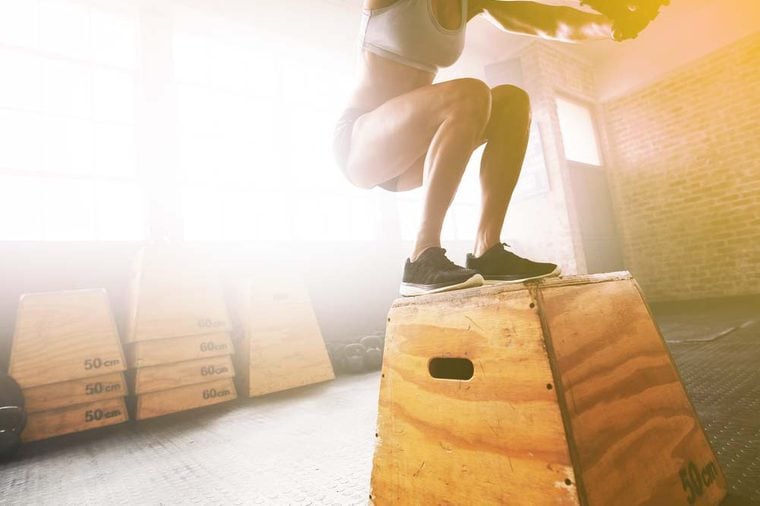
Boxes
Popular at Cross-Fit gyms, the jumps to get up and off the box can be hard on your ankles, knees, and hips. Focus on landing softly—and pay close attention: “I was practicing a simple 12-inch jump and skinned my shin on the front of the box,” says Jensen. “I’ve seen friends do this to a point where they have ended up in the ER. Never get lazy with technique or try something hard when you’re tired.”
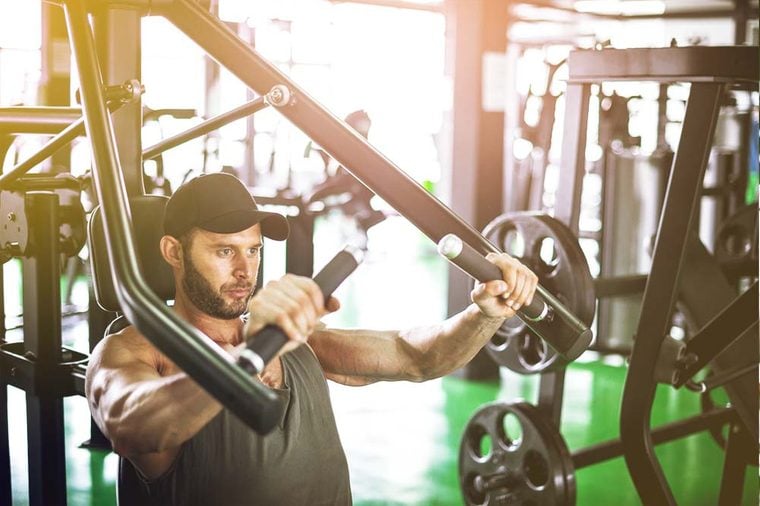
Chest press machine
This targets the chest, shoulders, and triceps, but McQuery notes that many people don’t properly calibrate the machine for their height, they set the resistance too high, and they use improper form. “Misusing this machine has the potential to cause shoulder and neck issues.” Walk away from the device and try pushups instead, he says. Keep your body aligned as you lower and rise, and you’ll challenge your entire body (just like this workout).
